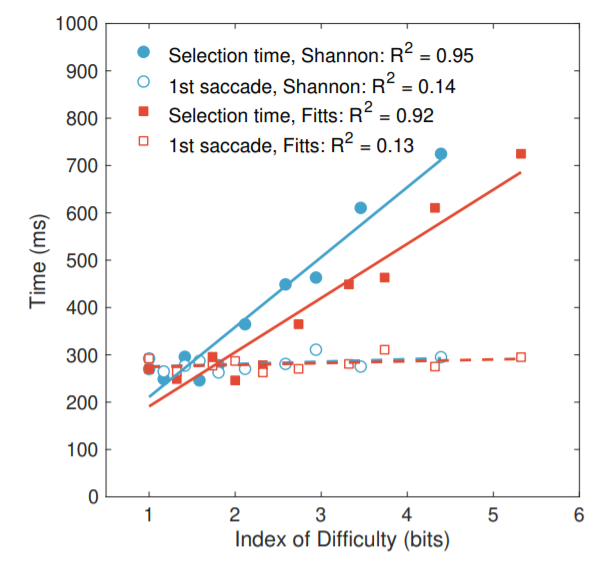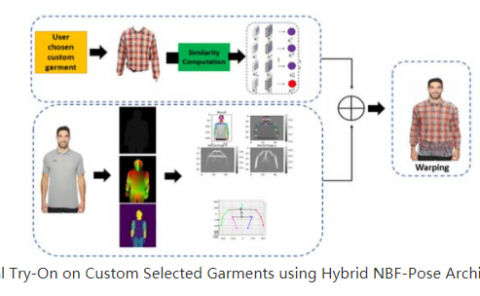An Explanation of Fitts’ Law-like Performance in Gaze-Based Selection Tasks Using a Psychophysics Approach
Teams: Facebook
Writers: Immo Schuetz, T. Scott Murdison, Kevin J. MacKenzie, Marina Zannoli
Publication date: May 4, 2019
Abstract
Eye gaze as an input method has been studied since the 1990s, to varied results: some studies found gaze to be more efficient than traditional input methods like a mouse, others far behind. Comparisons are often backed up by Fitts’ Law without explicitly acknowledging the ballistic nature of saccadic eye movements. Using a vision science-inspired model, we here show that a Fitts’-like distribution of movement times can arise due to the execution of secondary saccades, especially when targets are small. Study participants selected circular targets using gaze. Seven different target sizes and two saccade distances were used. We then determined performance across target sizes for different sampling windows (“dwell times”) and predicted an optimal dwell time range. Best performance was achieved for large targets reachable by a single saccade. Our findings highlight that Fitts’ Law, while a suitable approximation in some cases, is an incomplete description of gaze interaction dynamics.



